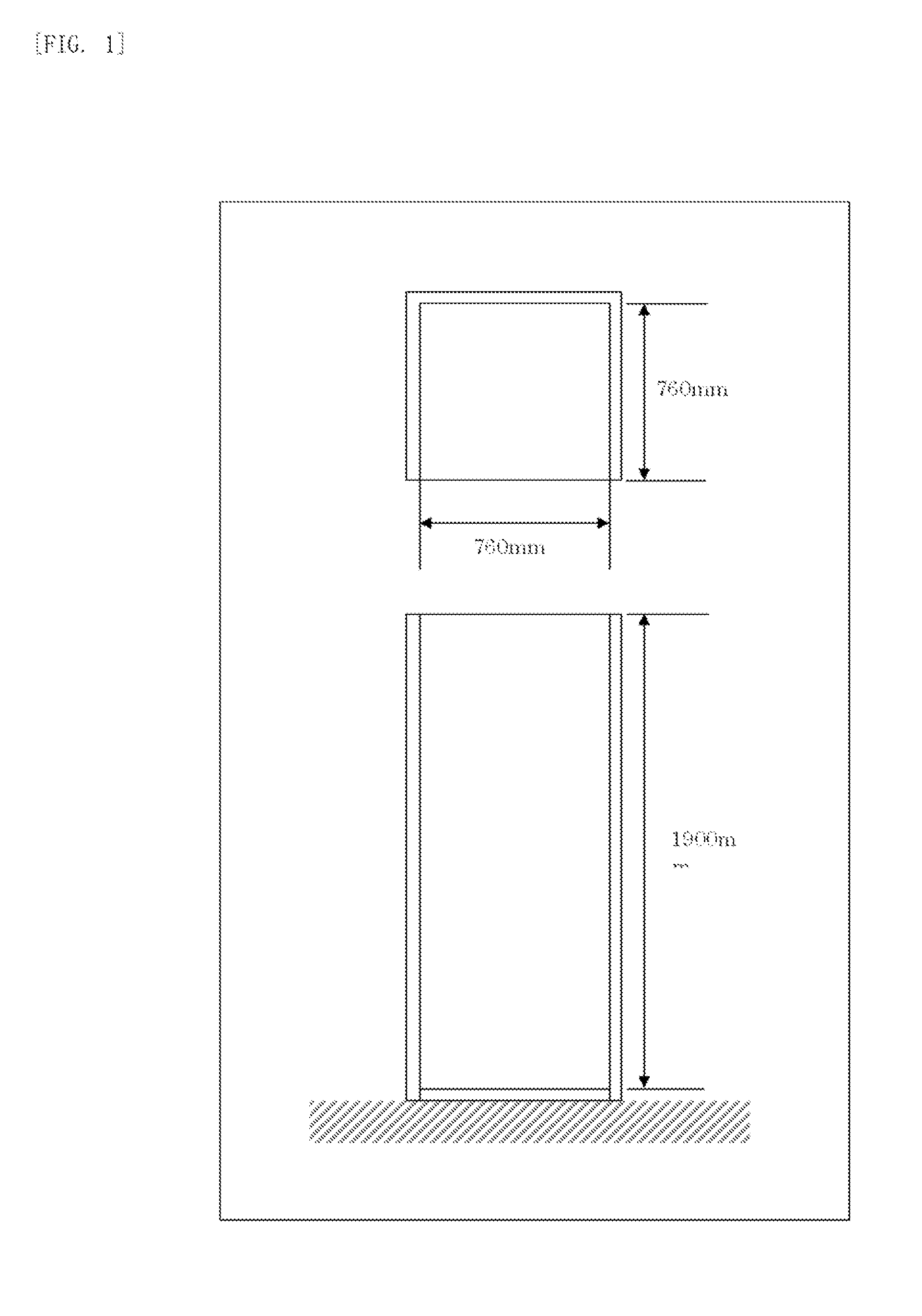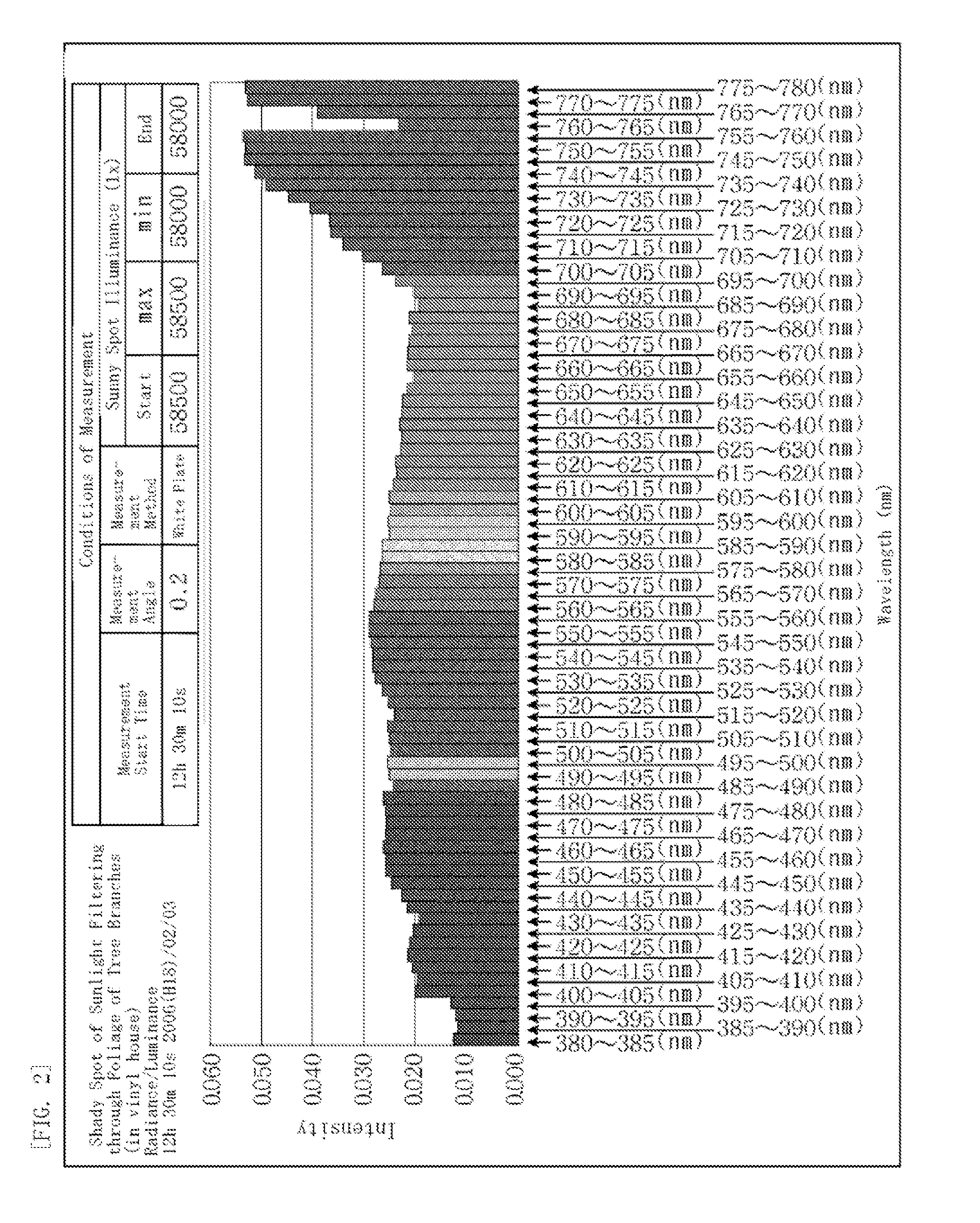Lighting environment control facility for cultivation of crops, pest control method, and intensive cultivation method
a technology of pest control and cultivation facility, applied in the direction of instruments, spectrometry/spectrophotometry/monochromators, optical radiation measurement, etc., can solve the problems of no exemplary method, inability to avoid predation damage, and inability to avoid an increase in the cost of providing this building, so as to activate the resistance to pests
- Summary
- Abstract
- Description
- Claims
- Application Information
AI Technical Summary
Benefits of technology
Problems solved by technology
Method used
Image
Examples
first embodiment
[0977]Cultivation experiments were conducted in accordance with an embodiment of the present invention and a comparative example.
[0978]For each of the cultivation experiments, C3 plants excluding shade plants and semi-shade plants were cultivated in an environment including a lighting environment in which a ratio of light of sunlight was changed to be equal to a ratio of light of a sunny spot of sunlight filtering through foliage.
[0979]The purpose was to check whether the C3 plants are protected from pests and diseases in such a cultivation environment without pesticides and whether fruits thereof have improved flavor.
[0980]Cultivation Experiment 1: Pesticide-Free Cultivation
[0981]1. Purpose of Experiment
[0982]The cultivation environment was configured such that a ratio of R / B in a cultivation house was larger than in a bare field and, at the same time, a ratio of R / FR in the cultivation house was smaller than in the bare field. It was checked whether eggplants were protected from p...
second embodiment
[1060]This cultivation experiment of eggplants was performed in a cultivation house closed by a light transmissive material, in which carbon dioxide was extremely insufficient in the daytime, oxygen was extremely insufficient at nighttime, and a maximum daytime temperature was 40° C. or more. However, a proper temperature for pollination and insemination of the eggplants is 20 to 25° C., and a proper temperature for a development period of fruits is 22 to 26° C. (Fundamentals of Vegetable Cultivation, published by Rural Culture Association and written by Suzuki Yosio et al.). Accordingly, this experiment is characterized in that the cultivation was performed under environments in which there was at least a day per week when the eggplants would have been withered if the eggplants were being cultivated on the bare field.
[1061]In general, under severe environments in which the house is closed by a light transmissive material and in a suffocation state of oxygen or carbon dioxide, and a...
third embodiment
[1143]Cultivation Experiment 4: Pesticide-free Cultivation Method
[1144]1. Purposes of Experiment 4
[1145]As the ratio of R / B in the cultivation house was set to be higher than that of the bare field and the ratio of R / FR in the cultivation house was set to be lower than that of the bare field, it was determined whether fruits / vegetables could be protected from pests or diseases with no pesticide. In addition, the cultivation method of improving tastes of the eggplants was accomplished.
[1146]2. Place of Experiment
[1147]Shinonome-cho, Kochi, Kochi
[1148]3. Period of Experiment
[1149]Sep. 30, 2006 to Dec. 22, 2006
[1150]4. Cultivation Conditions
[1151]4.1 Facility for Cultivation House and Species of Cultivated Crop Plants
[1152]The house of the experiment was a conventional vinyl house having sides and ceiling surrounded with vinyl, rathor than a weatherproof house through which sunlight directly enters. The house constructed by painting the entire house, except for the vinyl, and the outsi...
PUM
 Login to View More
Login to View More Abstract
Description
Claims
Application Information
 Login to View More
Login to View More - R&D
- Intellectual Property
- Life Sciences
- Materials
- Tech Scout
- Unparalleled Data Quality
- Higher Quality Content
- 60% Fewer Hallucinations
Browse by: Latest US Patents, China's latest patents, Technical Efficacy Thesaurus, Application Domain, Technology Topic, Popular Technical Reports.
© 2025 PatSnap. All rights reserved.Legal|Privacy policy|Modern Slavery Act Transparency Statement|Sitemap|About US| Contact US: help@patsnap.com



